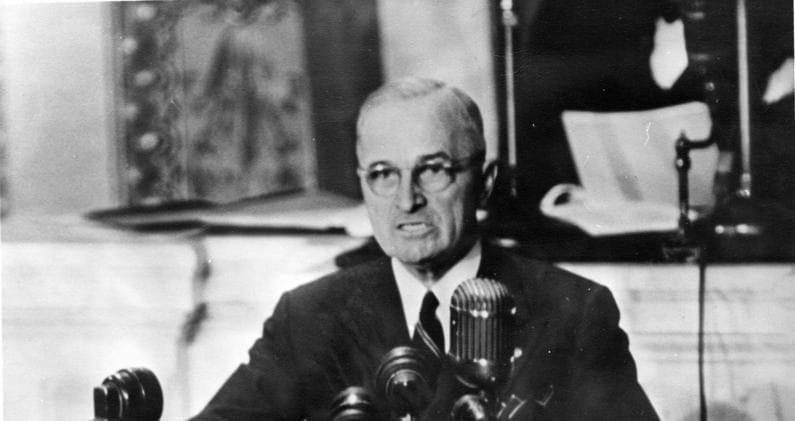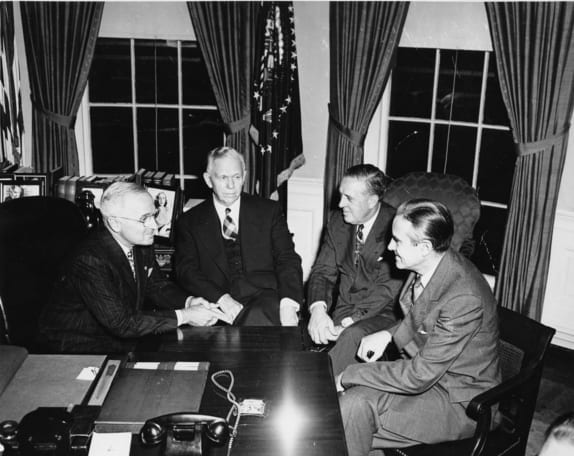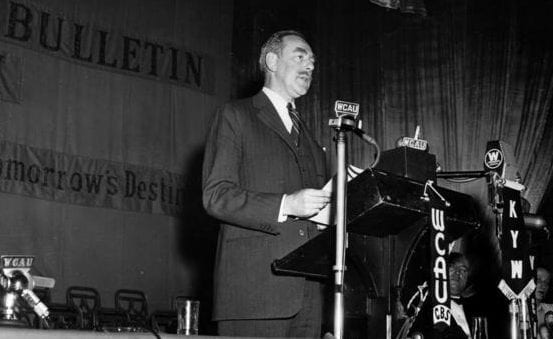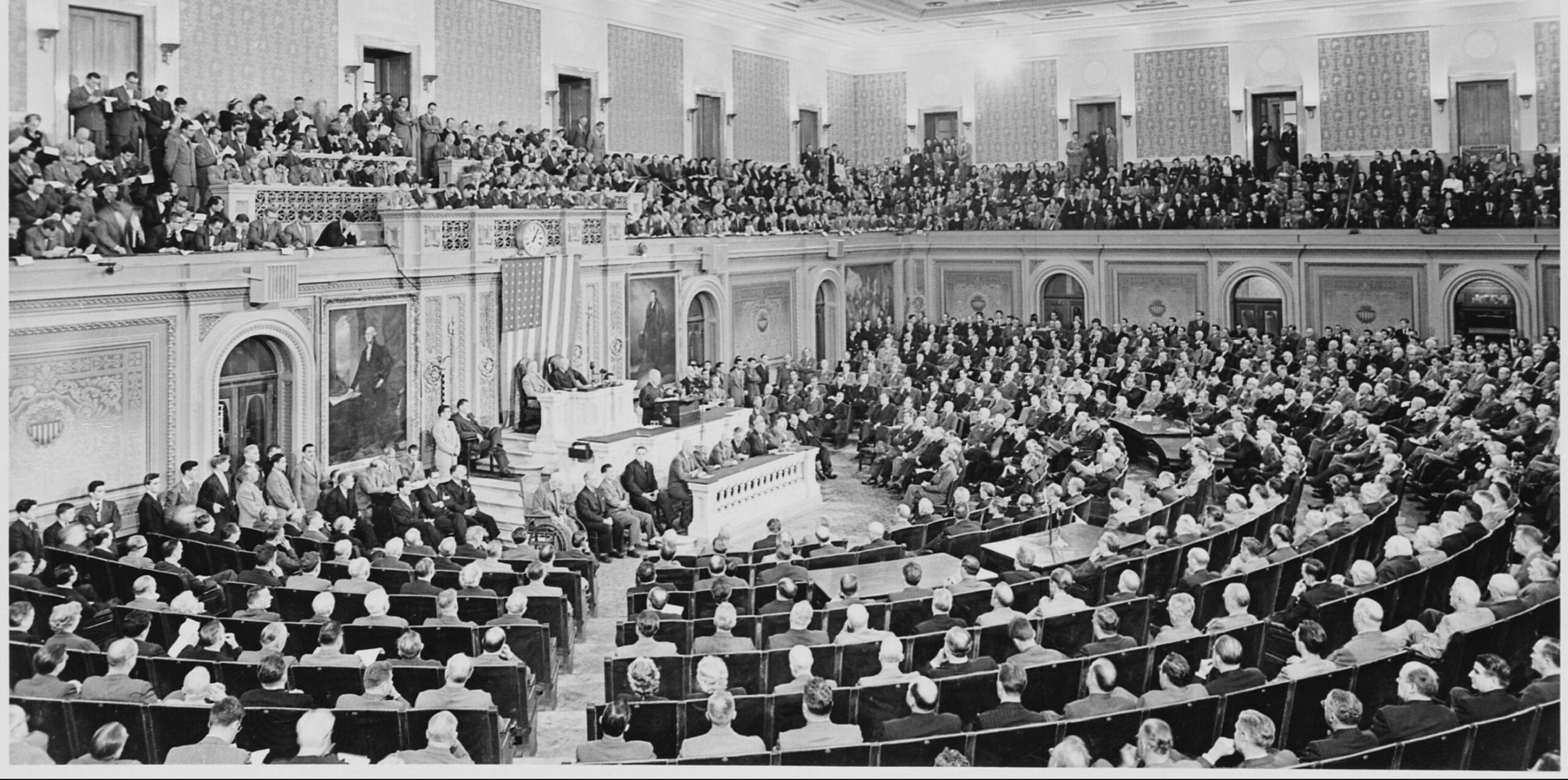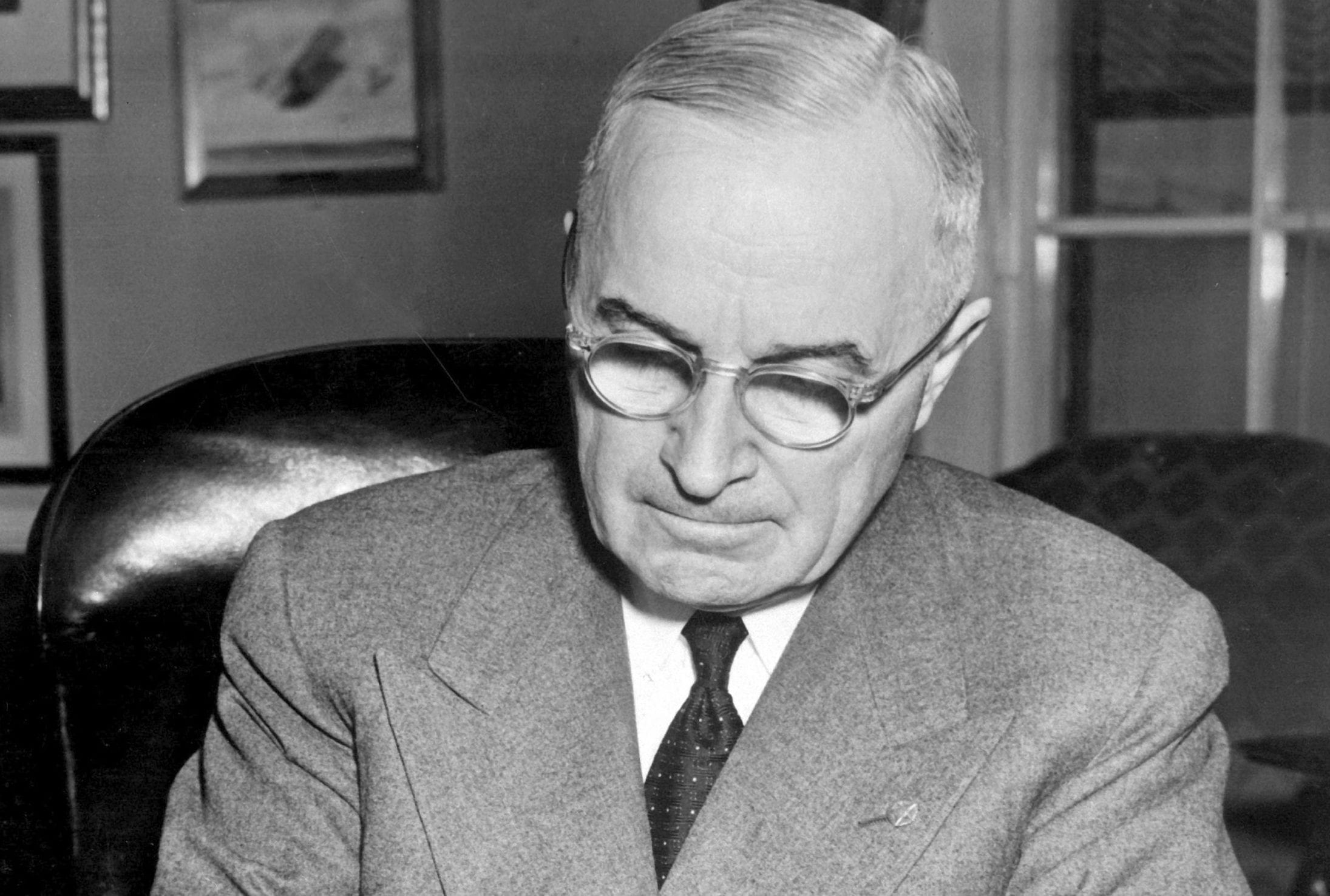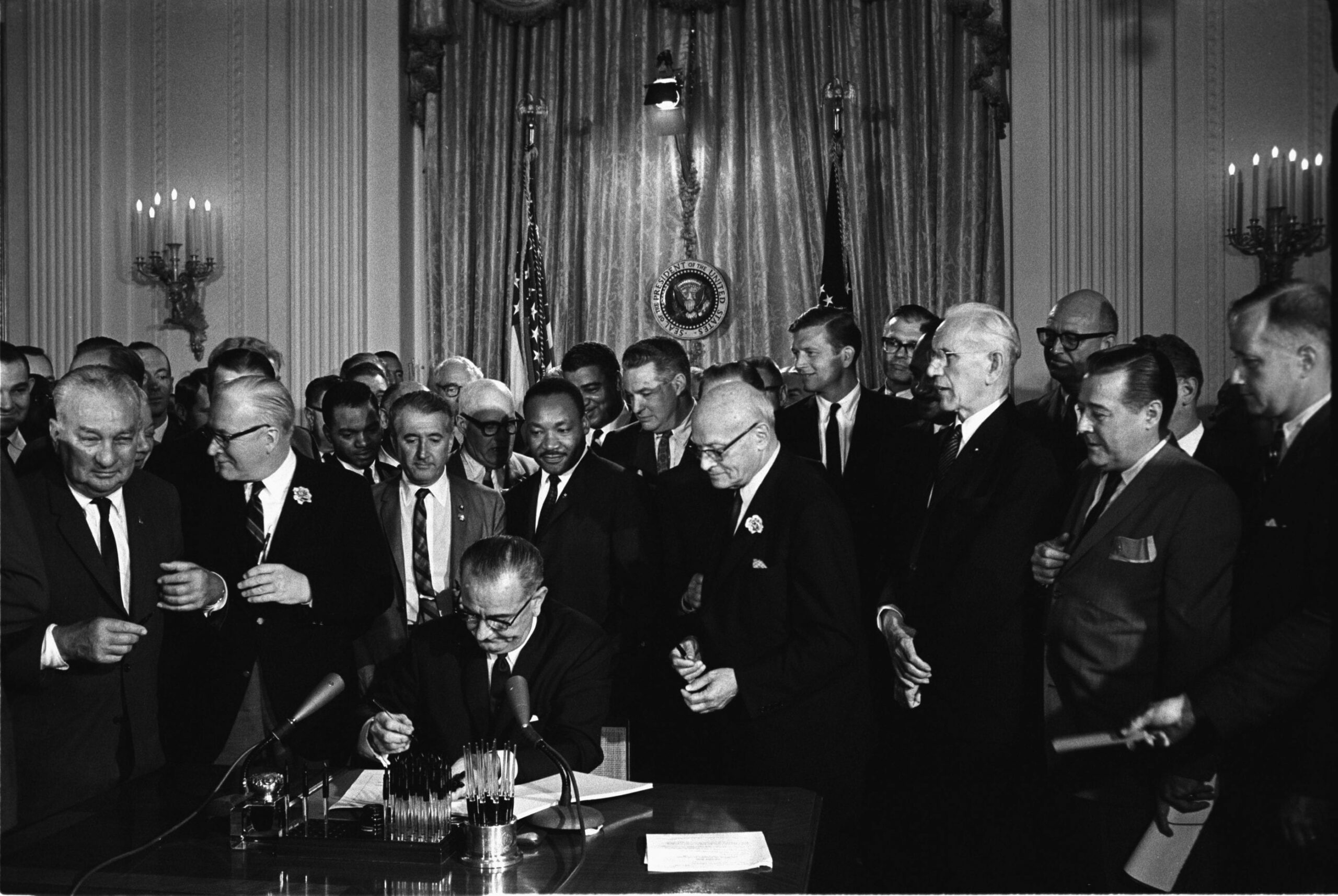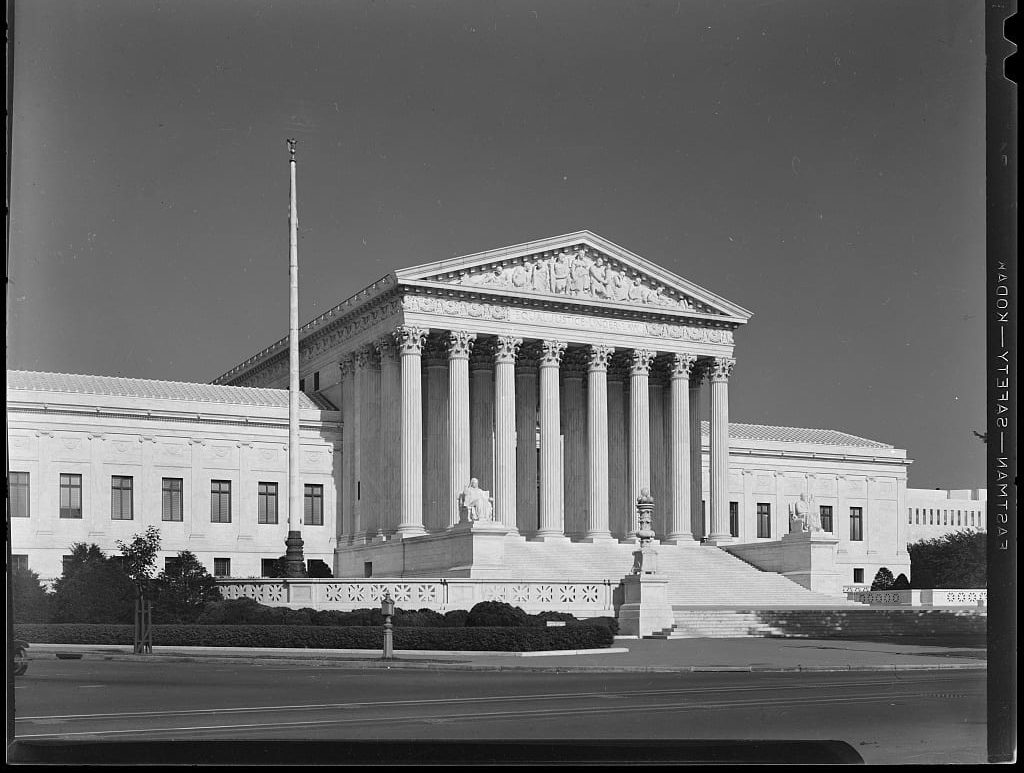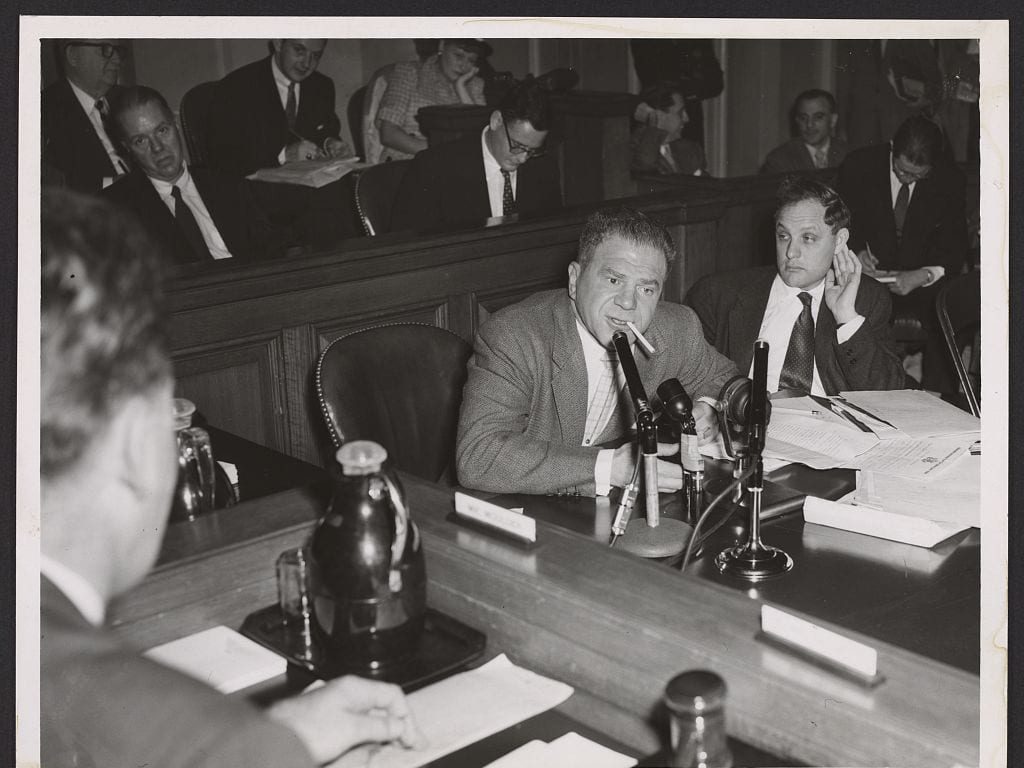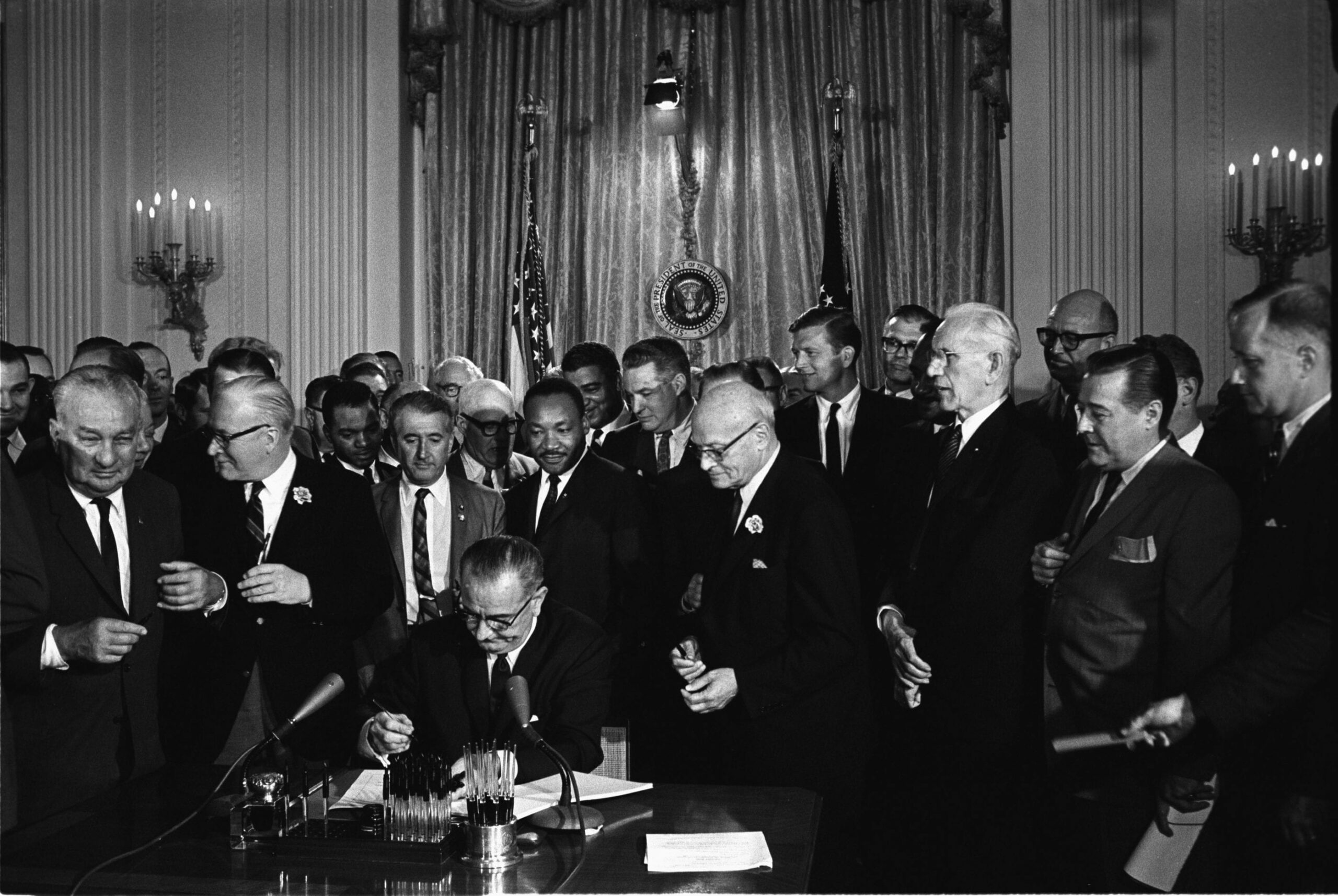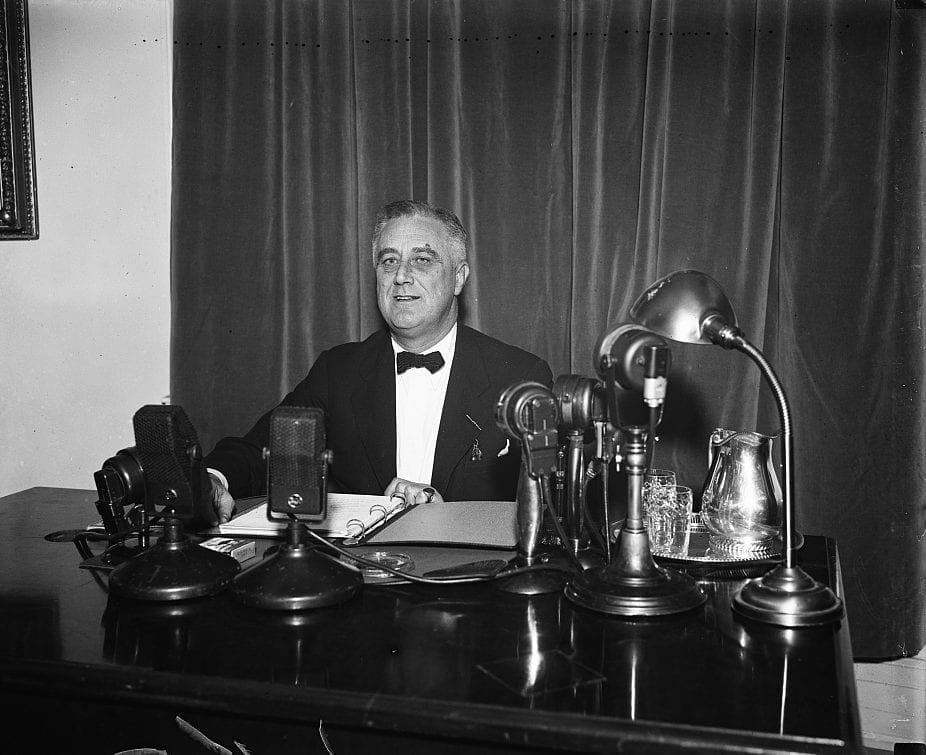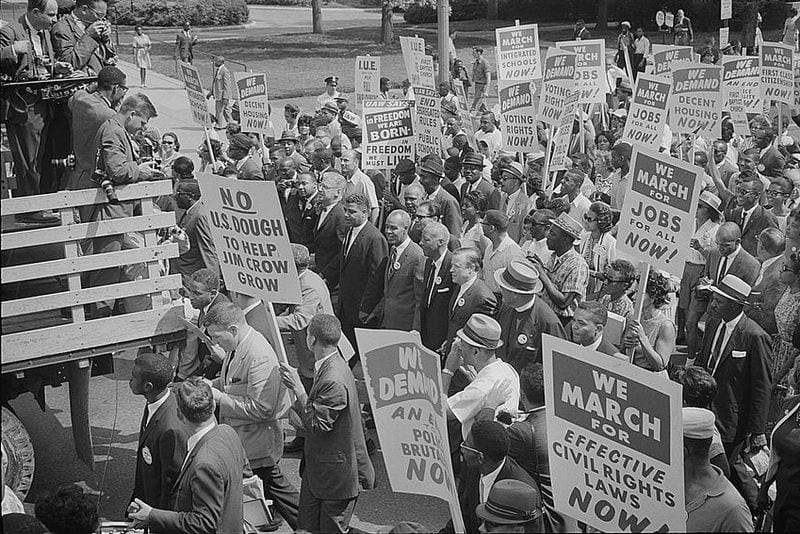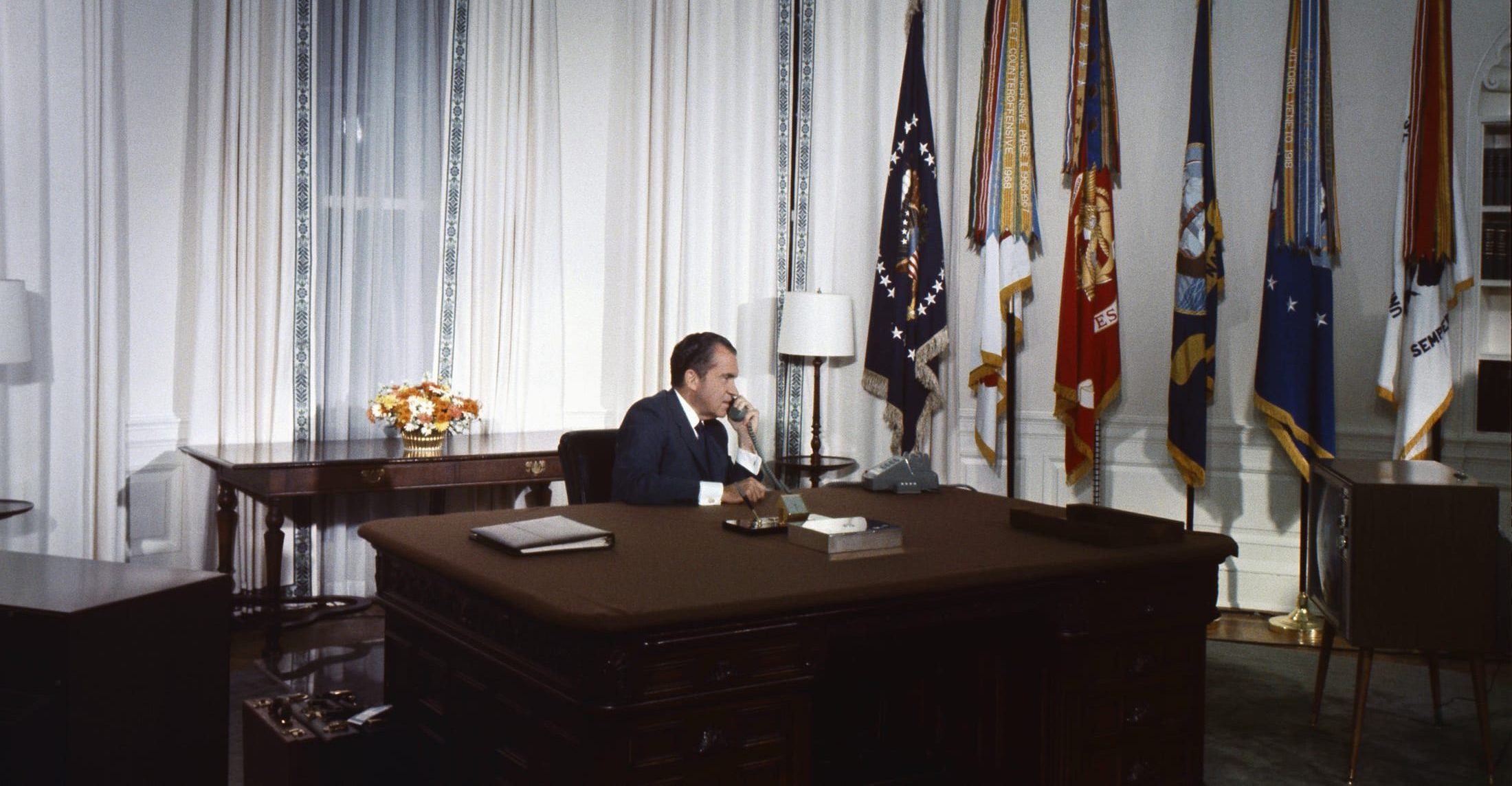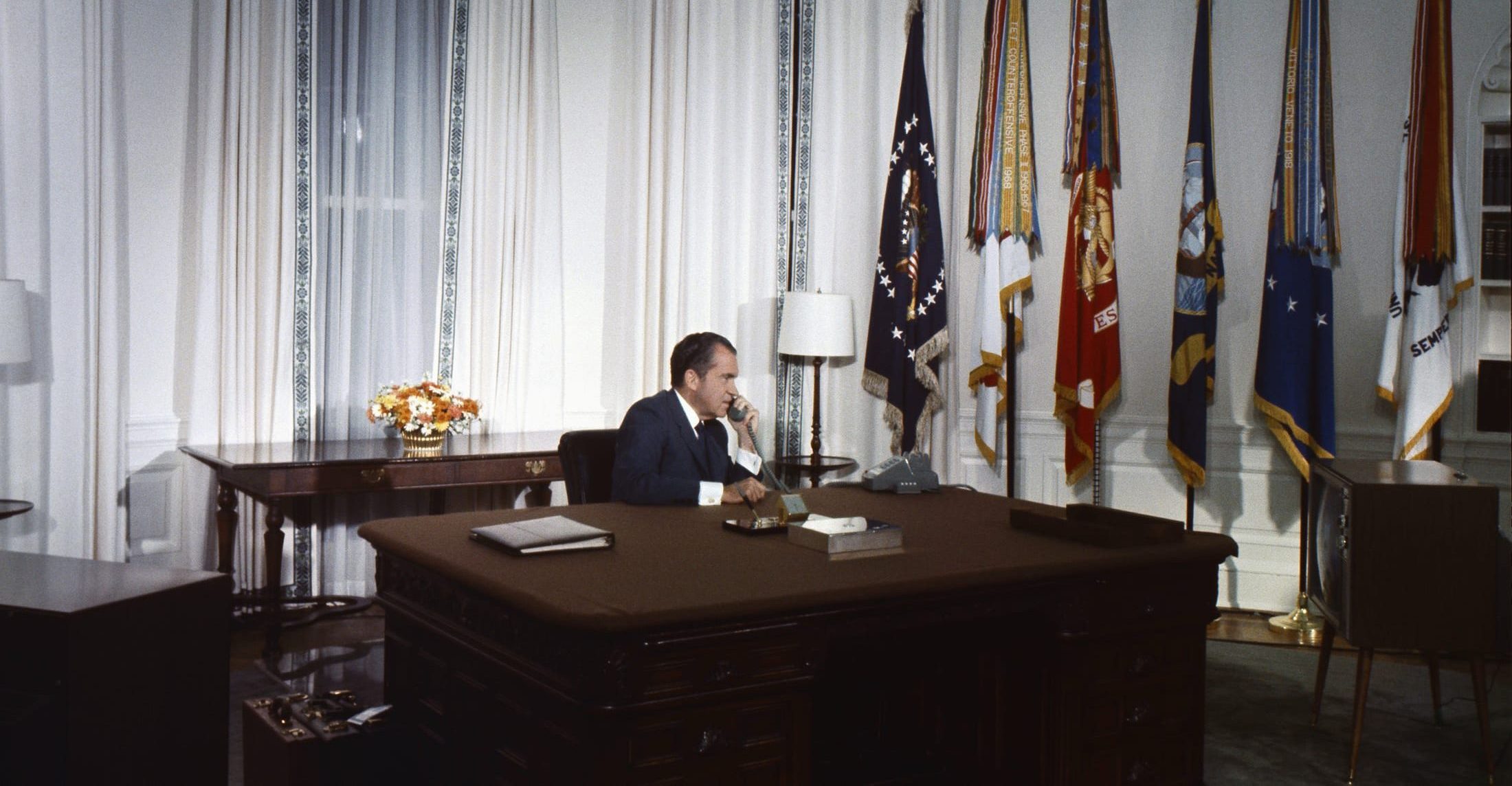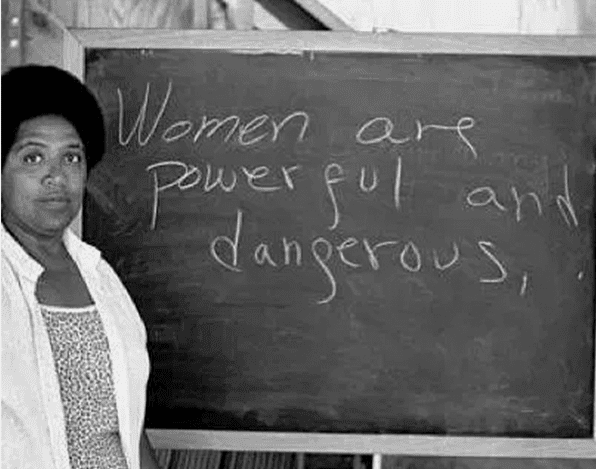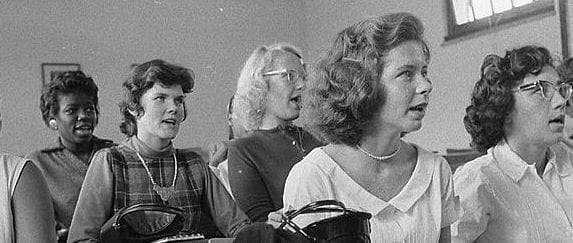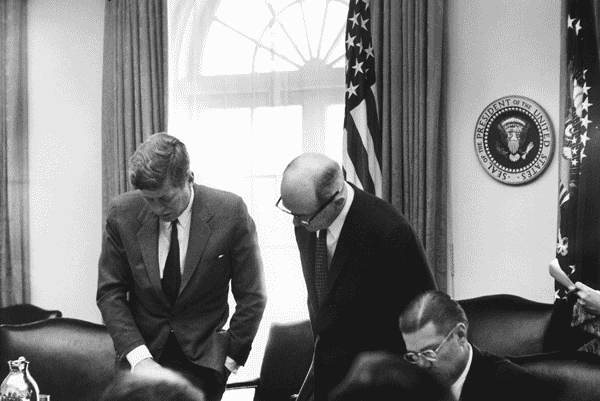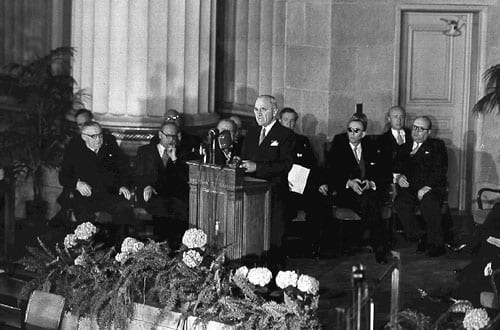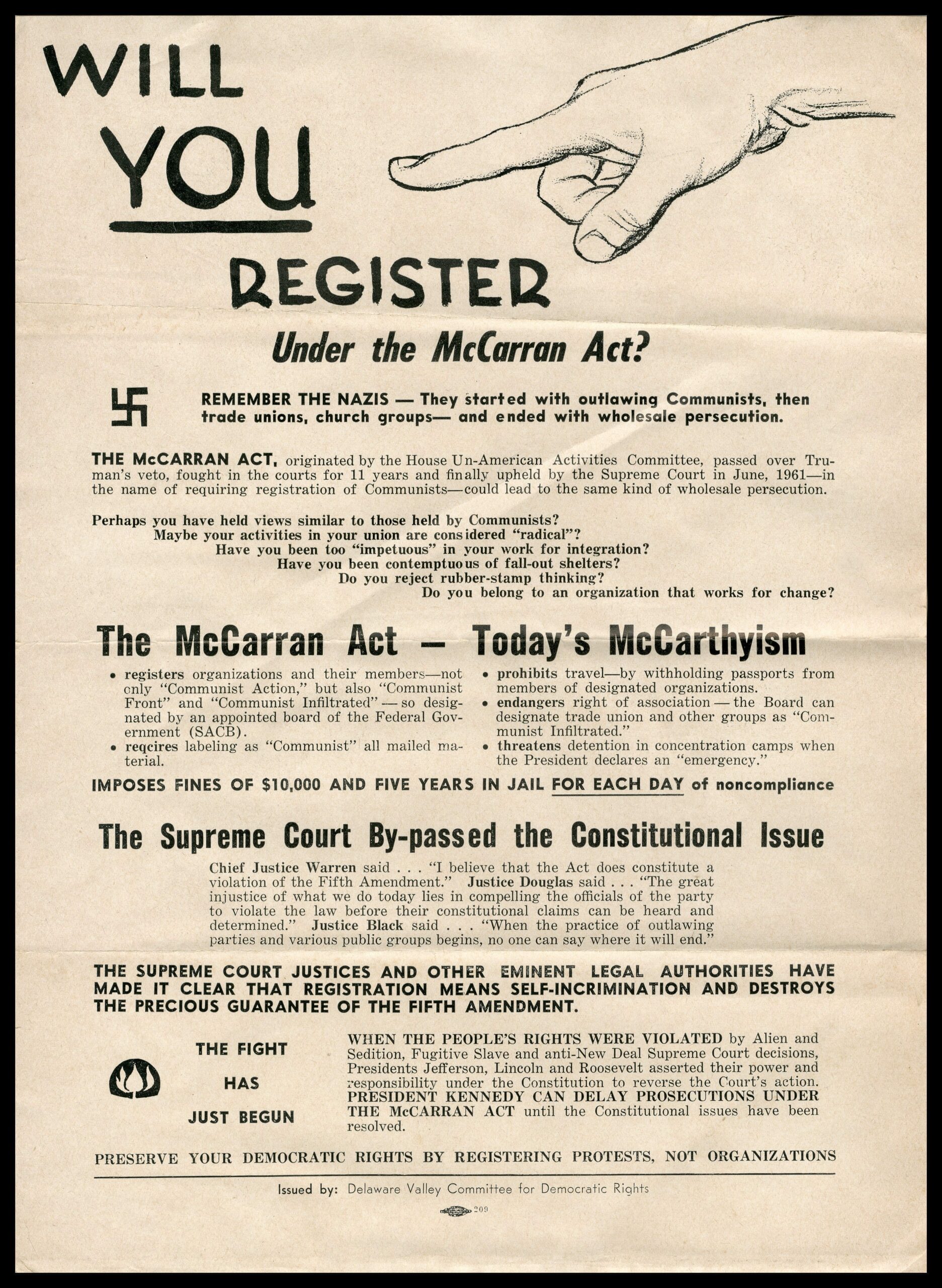


No related resources
Introduction
Although the Equal Rights Amendment (ERA) failed to secure the necessary support when originally introduced in 1923, it was reintroduced at every subsequent session of Congress—and was always defeated. In 1965, the President’s Commission on the Status of Women reported that the ERA would be unnecessary if the courts would apply the Fourteenth Amendment to gender as they did to race. This suggestion was viewed as so unrealistic that Betty Friedan (1921–2006) and others organized the National Organization of Women (NOW) in 1966 to fight for the ERA. With Friedan and other prominent feminists like Gloria Steinem (1934–) writing and speaking about the strategic importance of the amendment, it garnered enough public support to arouse Congress to hold floor debates on the issue over the course of the Ninety-First Congress (1969–1971).
In 1968, Shirley Chisholm (1924–2005) became the first African American woman to serve in the U.S. Congress. She introduced the ERA in an address to the House in 1969 and spoke in favor of its adoption again on August 10, 1970. The amendment passed both houses of Congress and was submitted to the states in 1972, with a deadline for ratification of March 22, 1979. Thirty-five of the necessary thirty-eight states ratified the amendment before opposition to it, led largely by Phyllis Schlafly (1924–2016), stalled the process. Under pressure from women’s groups like NOW, Congress extended the ratification deadline, but the amendment did not acquire the necessary support. More recently, some states have rescinded earlier ratifications while others have ratified the amendment despite the deadline having passed.
Source: Congressional Record, May 21, 1969, Extensions of Remarks E4165-6, and Congressional Record, 91st Congress, 2nd session, 1970, 116, pt. 21: 28028–29.
Address to the United States House of Representatives, May 21, 1969
Mr. Speaker, when a young woman graduates from college and starts looking for a job, she is likely to have a frustrating and even demeaning experience ahead of her. If she walks into an office for an interview, the first question she will be asked is, “Do you type?’’
There is a calculated system of prejudice that lies unspoken behind that question. Why is it acceptable for women to be secretaries, librarians, and teachers, but totally unacceptable for them to be managers, administrators, doctors, lawyers, and members of Congress?
The unspoken assumption is that women are different. They do not have executive ability, orderly minds, stability, [or] leadership skills, and they are too emotional.
It has been observed before that society for a long time discriminated against another minority, the blacks, on the same basis—that they were different and inferior. The happy little homemaker and the contented “old darkey” on the plantation were both produced by prejudice.
As a black person, I am no stranger to race prejudice. But the truth is that in the political world I have been far oftener discriminated against because I am a woman than because I am black.
Prejudice against blacks is becoming unacceptable although it will take years to eliminate it. But it is doomed because, slowly, white America is beginning to admit that it exists. Prejudice against women is still acceptable. There is very little understanding yet of the immorality involved in double pay scales and the classification of most of the better jobs as “for men only.”
More than half of the population of the United States is female. But women occupy only 2 percent of the managerial positions. They have not even reached the level of tokenism yet. No women sit on the AFL-CIO council or Supreme Court. There have been only two women who have held cabinet rank, and at present there are none. Only two women now hold ambassadorial rank in the diplomatic corps. In Congress, we are down to one senator and ten representatives.
Considering that there are about 3.5 million more women in the United States than men, this situation is outrageous.
It is true that part of the problem has been that women have not been aggressive in demanding their rights. This was also true of the black population for many years. They submitted to oppression and even cooperated with it. Women have done the same thing. But now there is an awareness of this situation particularly among the younger segment of the population.
As in the field of equal rights for blacks, Spanish Americans, the Indians, and other groups, laws will not change such deep-seated problems overnight. But they can be used to provide protection for those who are most abused, and to begin the process of evolutionary change by compelling the insensitive majority to reexamine its unconscious attitudes.
It is for this reason that I wish to introduce today a proposal that has been before every Congress for the last forty years and that sooner or later must become part of the basic law of the land—the Equal Rights Amendment.
Let me note and try to refute two of the commonest arguments that are offered against this amendment. One is that women are already protected under the law and do not need legislation. Existing laws are not adequate to secure equal rights for women. Sufficient proof of this is the concentration of women in lower-paying, menial, unrewarding jobs and their incredible scarcity in the upper-level jobs. If women are already equal, why is it such an event whenever one happens to be elected to Congress?
It is obvious that discrimination exists. Women do not have the opportunities that men do. And women that do not conform to the system, who try to break with the accepted patterns, are stigmatized as ‘’odd’’ and “unfeminine.” The fact is that a woman who aspires to be chairman of the board, or a member of the House, does so for exactly the same reasons as any man. Basically, these are that she thinks she can do the job and she wants to try.
A second argument often heard against the Equal Rights Amendment is that it would eliminate legislation that many states and the federal government have enacted giving special protection to women and that it would throw the marriage and divorce laws into chaos.
As for the marriage laws, they are due for a sweeping reform, and an excellent beginning would be to wipe the existing ones off the books. Regarding special protection for working women, I cannot understand why it should be needed. Women need no protection that men do not need. What we need are laws to protect working people, to guarantee them fair pay, safe working conditions, protection against sickness and layoffs, and provision for dignified, comfortable retirement. Men and women need these things equally. That one sex needs protection more than the other is a male supremacist myth as ridiculous and unworthy of respect as the white supremacist myths that society is trying to cure itself of at this time.
Address to the United States House of Representatives, August 10, 1970
Mr. Speaker, House Joint Resolution 264, before us today, which provides for equality under the law for both men and women, represents one of the most clear-cut opportunities we are likely to have to declare our faith in the principles that shaped our Constitution. It provides a legal basis for attack on the most subtle, most pervasive, and most institutionalized form of prejudice that exists. Discrimination against women, solely on the basis of their sex, is so widespread that is seems to many persons normal, natural, and right.
Legal expression of prejudice on the grounds of religious or political belief has become a minor problem in our society. Prejudice on the basis of race is, at least, under systematic attack. There is reason for optimism that it will start to die with the present, older generation. It is time we act to assure full equality of opportunity to those citizens who, although in a majority, suffer the restrictions that are commonly imposed on minorities, to women.
The argument that this amendment will not solve the problem of sex discrimination is not relevant. If the argument were used against a civil rights bill, as it has been used in the past, the prejudice that lies behind it would be embarrassing. Of course laws will not eliminate prejudice from the hearts of human beings. But that is no reason to allow prejudice to continue to be enshrined in our laws—to perpetuate injustice through inaction.
The amendment is necessary to clarify countless ambiguities and inconsistencies in our legal system. For instance, the Constitution guarantees due process of law, in the Fifth and Fourteenth Amendments. But the applicability of due process of sex distinctions is not clear. Women are excluded from some state colleges and universities. In some states, restrictions are placed on a married woman who engages in an independent business. Women may not be chosen for some juries. Women even receive heavier criminal penalties than men who commit the same crime. What would the legal effects of the Equal Rights Amendment really be? The Equal Rights Amendment would govern only the relationship between the state and its citizens—not relationships between private citizens. The amendment would be largely self-executing, that is, any federal or state laws in conflict would be ineffective one year after date of ratification without further action by the Congress or state legislatures.
Opponents of the amendment claim its ratification would throw the law into a state of confusion and would result in much litigation to establish its meaning. This objection overlooks the influence of legislative history in determining intent and the recent activities of many groups preparing for legislative changes in this direction.
State labor laws applying only to women, such as those limiting hours of work and weights to be lifted would become inoperative unless the legislature amended them to apply to men. As of early 1970 most states would have some laws that would be affected. However, changes are being made so rapidly as a result of Title VII of the Civil Rights Act of 1964,1 it is likely that by the time the Equal Rights Amendment would become effective, no conflicting state laws would remain.
In any event, there has for years been great controversy as to the usefulness to women of these state labor laws. There has never been any doubt that they worked a hardship on women who need or want to work overtime and on women who need or want better-paying jobs, and there has been no persuasive evidence as to how many women benefit from the archaic policy of the laws. After the Delaware hours law was repealed in 1966, there were no complaints from women to any of the state agencies that might have been approached.
Jury service laws not making women equally liable for jury service would have been revised. The selective service law would have to include women, but women would not be required to serve in the armed forces where they are not fitted any more than men are required to serve. Military service, while a great responsibility, is not without benefits, particularly for young men with limited education or training.
Since October 1966, 246,000 young men who did not meet the normal mental or physical requirements have been given opportunities for training and correcting physical problems. This opportunity is not open to their sisters. Only girls who have completed high school and meet high standards on the educational test can volunteer. Ratification of the amendment would not permit application of higher standards to women.
Survivorship benefits would be available to husbands of female workers on the same basis as to wives of male workers. The Social Security Act and the civil service and military service retirement acts are in conflict. Public schools and universities could not be limited to one sex and could not apply different admission standards to men and women. Laws requiring longer prison sentences for women than men would be invalid, and equal opportunities for rehabilitation and vocational training would have to be provided in public correctional institutions. Different ages of majority based on sex would have to be harmonized. Federal, state, and other governmental bodies would be obligated to follow nondiscriminatory practices in all aspects of employment, including public school teachers and state university and college faculties.
What would be the economic effects of the Equal Rights Amendment? Direct economic effects would be minor. If any labor laws applying only to women still remained, their amendment or repeal would provide opportunity for women in better-paying jobs in manufacturing. More opportunities in public vocational and graduate schools for women would also tend to open up opportunities in better jobs for women.
Indirect effects could be much greater. The focusing of public attention on the gross legal, economic, and social discrimination against women by hearings and debates in the federal and state legislatures would result in changes in attitude of parents, educators, and employers that would bring about substantial economic changes in the long run.
Sex prejudice cuts both ways. Men are oppressed by the requirements of the Selective Service Act, by enforced legal guardianship of minors, and by alimony laws. Each sex, I believe, should be liable when necessary to serve and defend this country. Each has a responsibility for the support of children.
There are objections raised to wiping out laws protecting women workers. No one would condone exploitation. But what does sex have to do with it? Working conditions and hours that are harmful to women are harmful to men; wages that are unfair for women are unfair for men. Laws setting employment limitations on the basis of sex are irrational, and the proof of this is their inconsistency from state to state. The physical characteristics of men and women are not fixed, but cover two wide spans that have a great deal of overlap. It is obvious, I think, that a robust woman could be more fit for physical labor than a weak man. The choice of occupation would be determined by individual capabilities, and the rewards for equal works should be equal.
This is what it comes down to: artificial distinctions between persons must be wiped out of the law. Legal discrimination between the sexes is, in almost every instance, founded on outmoded views of society and the prescientific beliefs about psychology and physiology. It is time to sweep away these relics of the past and set further generations free of them. Federal agencies and institutions responsible for the enforcement of equal opportunity laws need the authority of a constitutional amendment. The 1964 Civil Rights Act and the 1963 Equal Pay Act are not enough; they are limited in their coverage—for instance, one excludes teachers, and the other leaves out administrative and professional women. The Equal Employment Opportunity Commission has not proven to be an adequate device, with its power limited to investigation, conciliation, and recommendation to the Justice Department. In its cases involving sexual discrimination, it has failed in more than one-half. The Justice Department has been even less effective. It has intervened in only one case involving discrimination on the basis of sex, and this was on a procedural point. In a second case, in which both sexual and racial discrimination were alleged, the racial bias charge was given far greater weight.
Evidence of discrimination on the basis of sex should hardly have to be cited here. It is in the Labor Department’s employment and salary figures for anyone who is still in doubt. Its elimination will involve so many changes in our state and federal laws that, without the authority and impetus of this proposed amendment, it will perhaps take another 194 years. We cannot be parties to continuing a delay. The time is clearly now to put this House on record for the fullest expression of that equality of opportunity which our Founding Fathers professed. They professed it, but they did not assure it to their daughters, as they tried to do for their sons.
The Constitution they wrote was designed to protect the rights of white, male citizens. As there were no black Founding Fathers, there were no Founding Mothers—a great pity, on both counts. It is not too late to complete the work they left undone. Today, here, we should start to do so. . . .
- 1. Title VII of the act forbade discrimination in employment on the basis of race, color, national origin, sex, and religion.
Haverford Statement
May 31, 1969
Conversation-based seminars for collegial PD, one-day and multi-day seminars, graduate credit seminars (MA degree), online and in-person.








